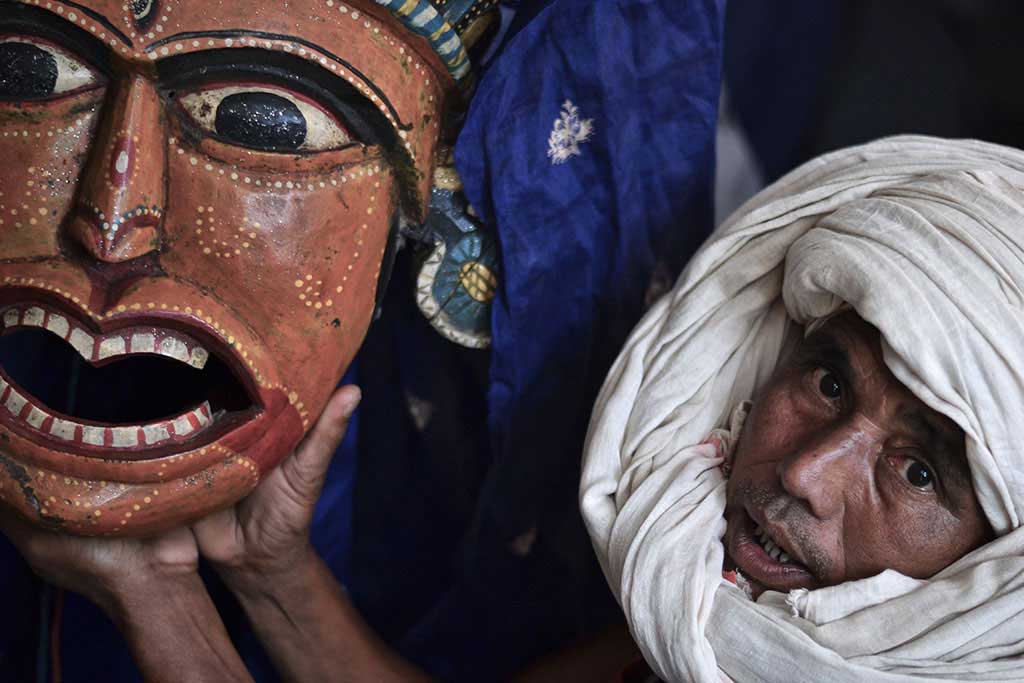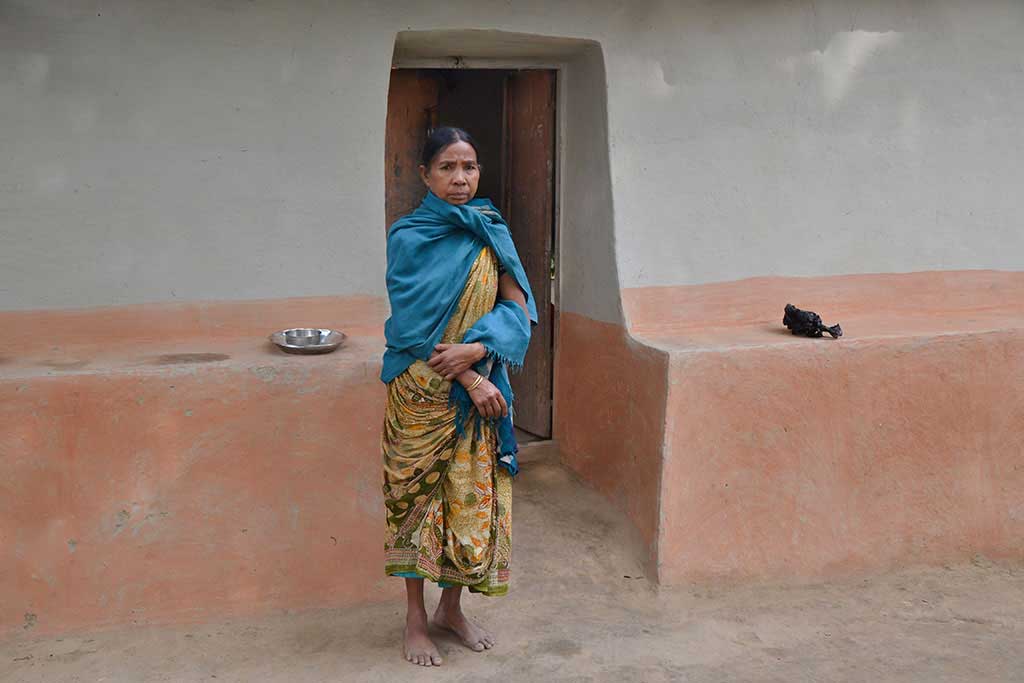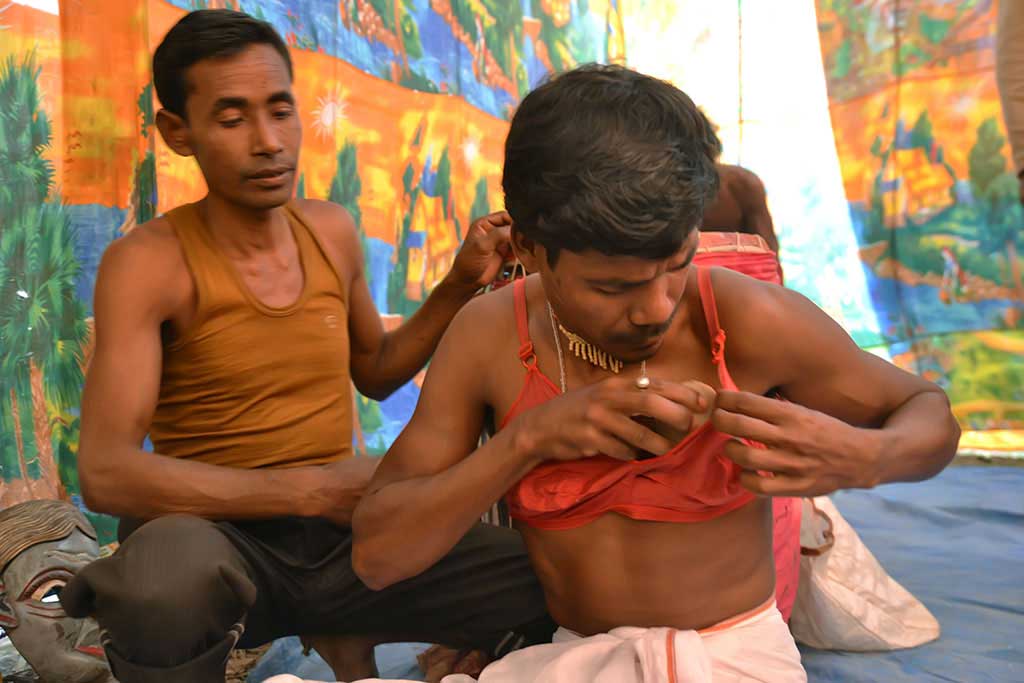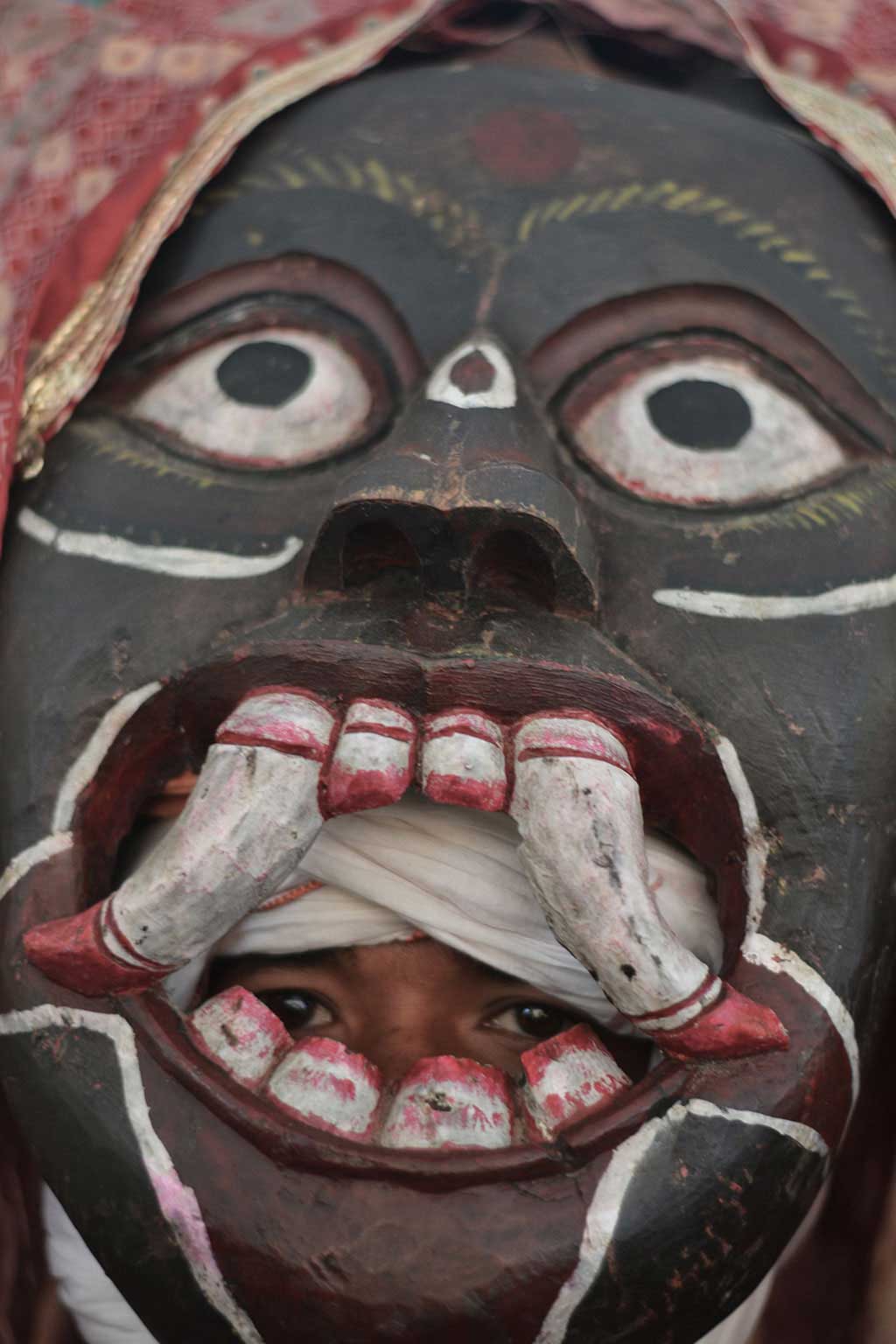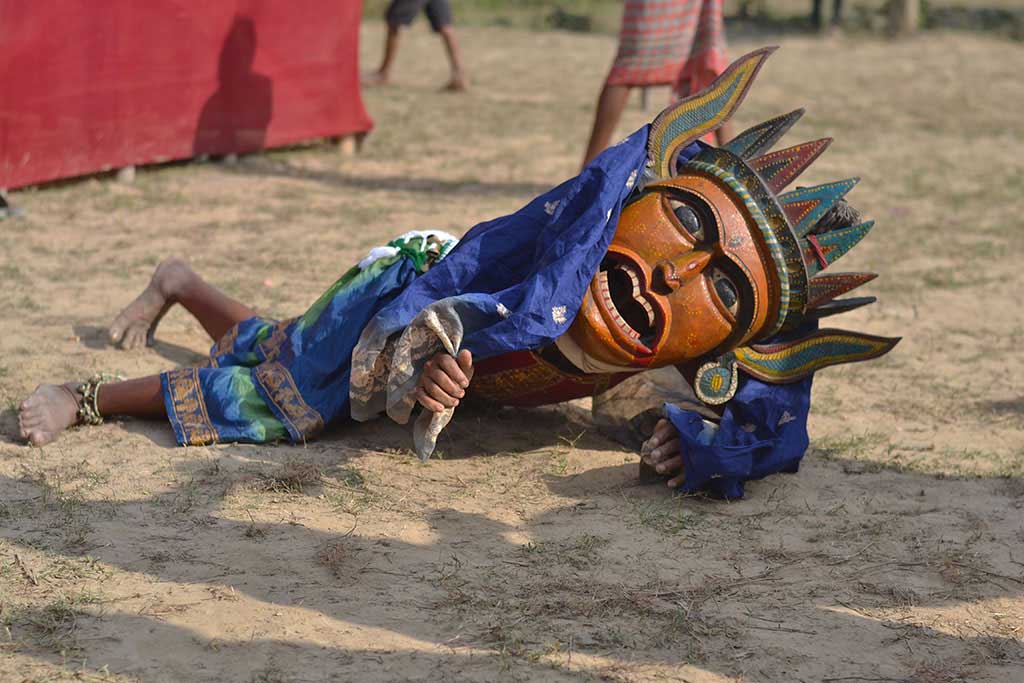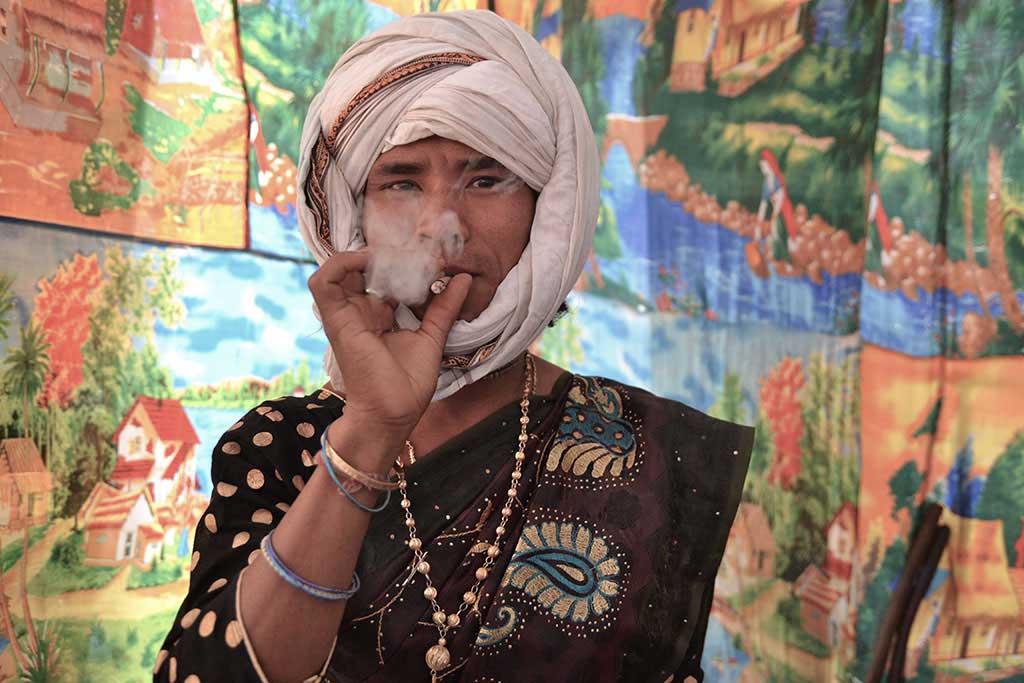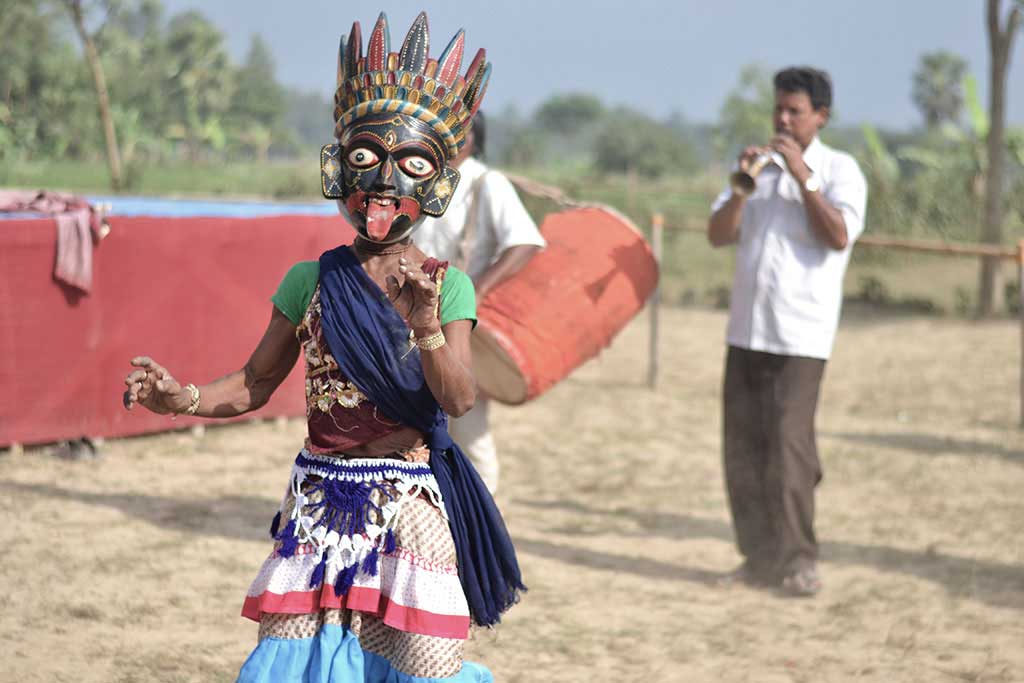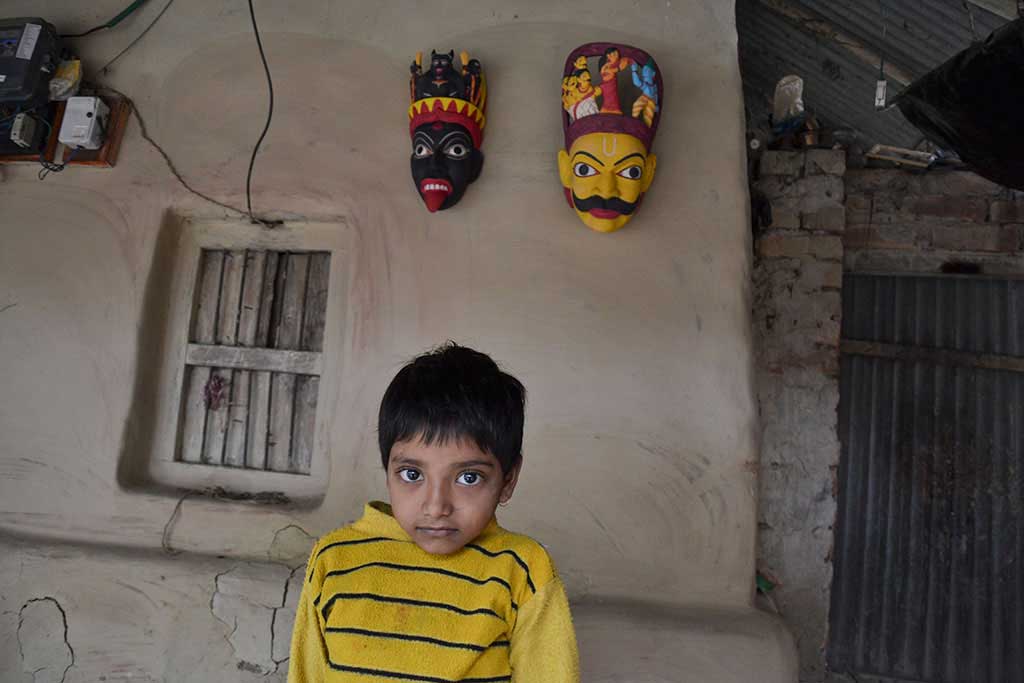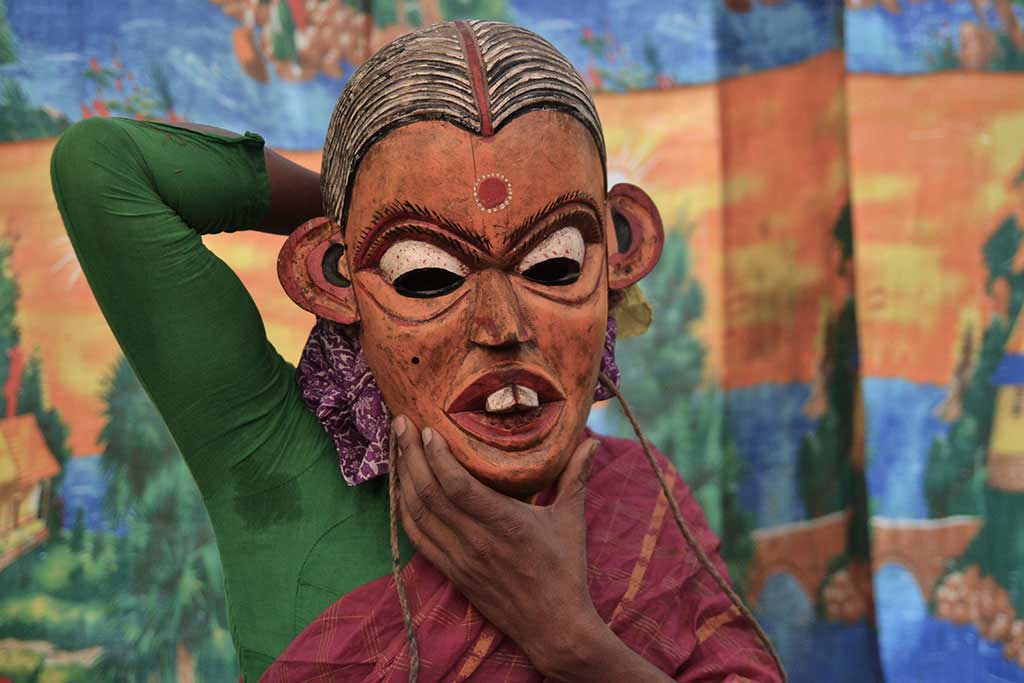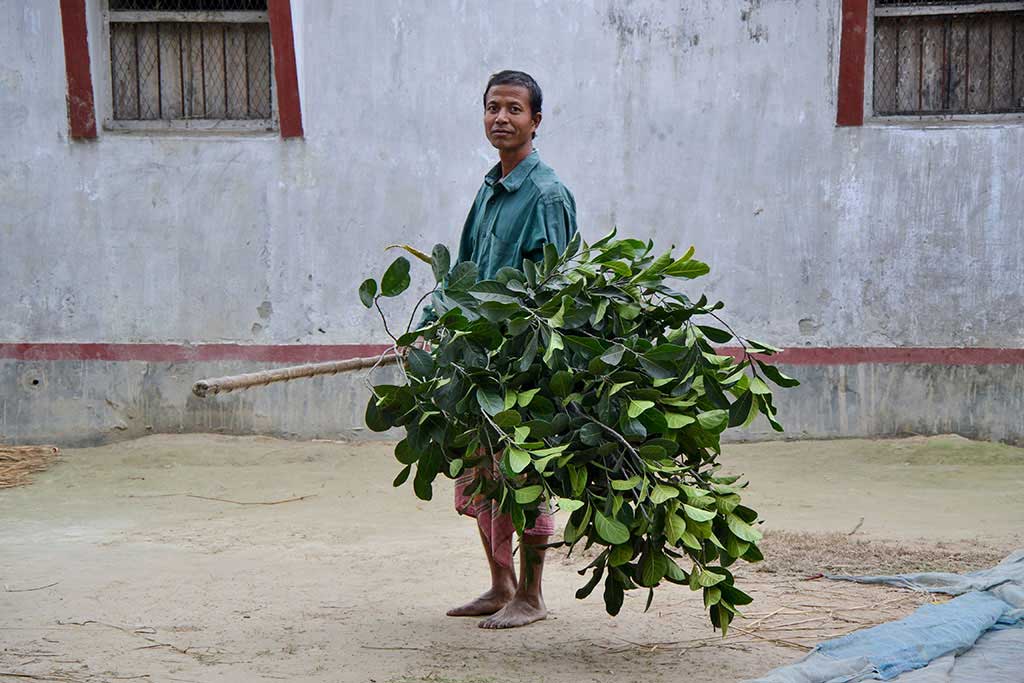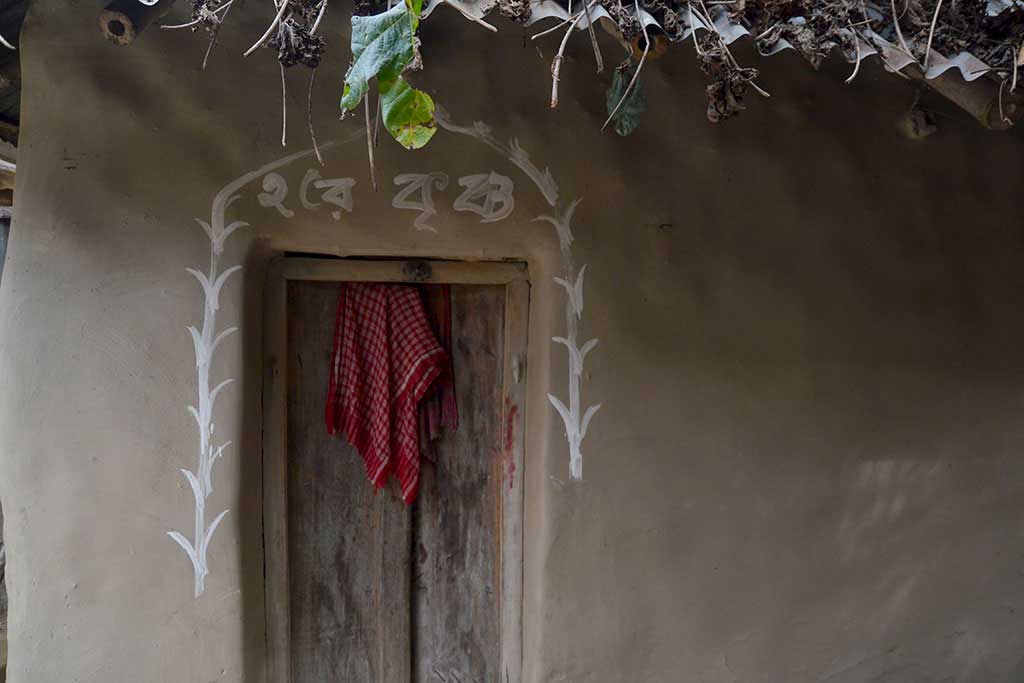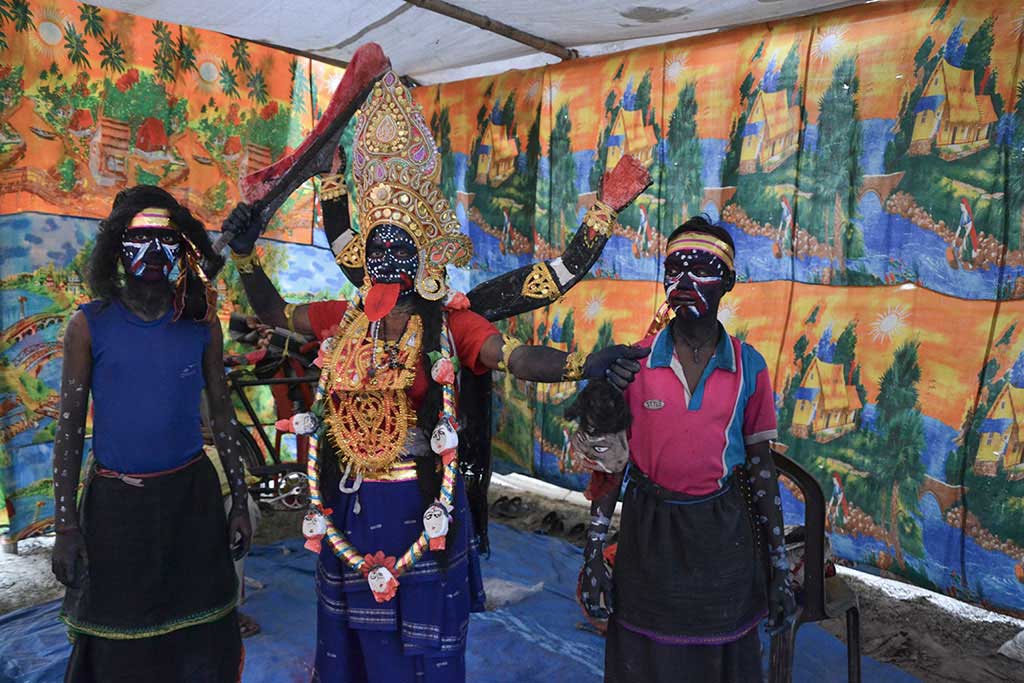The ecstatic Gomira dance masks of Dinajpur district have ensued from animistic practices of the Desi and Poli communities of the Rajbangshis. Every village has its own Gomira dance troupe.
The dancers are all male, without exception, and portray one or many characters, male, female or animal. All the characters are larger than life. The dancers become frenzied due to the extra efforts they have to put in.
The audience believes it is due to the super natural spirit that enters the body of the dancer. The masks are devised to reach the vastness and become the object of worship and devotion. Thus the craft of Gomira mask-making, in its pristine form, catered to the needs of the dancers and any villager wishing to give a mask as an offering to the village deity. A villager makes a ‘promise’- called ‘manat’, to offer a mask to a deity if his or her wish is fulfilled.In last three or four decades the masks have made a slow sojourn from the village dance to the urban drawing rooms and have become delectable pieces of decoration for any public or private space. The Gomira dances or Mukha khel are organized to propitiate the deity to usher in the ‘good forces’ and drive out the ‘evil force’. Traditionally, the Gomira dance starts with the entry of two characters Buro-Buri, the human forms of Shiva and Parvati. The other format is the Ram-Vanwas, which derives its characters from the Indian epic, Ramayana. Ram-Vanwas dance is more popular during October- November, the times for Durga Puja and Kali Puja.



